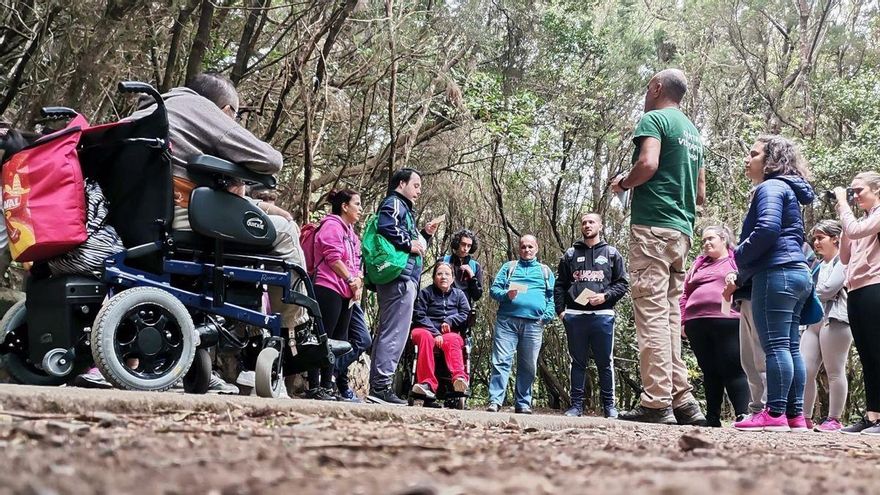
The Council of Tenerifethrough the Insular Directorate of Tourism, has compiled in a manual the guidelines to follow in the execution of accessible trails projects, with the aim of homogenizing its design to offer a unified image, equipment and adapted services.
The insular director of Tourism, Laura Castro, pointed out that “This manual is a pioneer in Spain and the Cabildo has promoted its preparation, in collaboration with the Natural Environment Management and Social Action areas, with the aim of marking a roadmap for any accessible trail project that is drawn up. The idea is that the design parameters are homogenized and we intend that it also serve as a reference for designers who need to design an inclusive path”.
Laura Castro clarified that its preparation is based on the experience of countries with extensive experience in regulating accessible interventions in the natural environment, such as the United States or Canada.
“Currently there are no specific regulations in the natural environment for accessibility. The objective of this manual is to contribute to this end, constituting itself as a technical guide for the design of trails with accessibility on the island, already existing or newly created, guaranteeing a homogeneity of criteria when approaching an area, the natural space, which lacks specific regulation in this matter”, pointed out the island official.
For her part, the third vice-president and insular counselor of Social Action, Marián Franquet, highlighted “the important function that this manual fulfills, the content of which has been coordinated with Sinpromi, to work jointly from the respective departments in the attention to diversity of people and, especially, of people with reduced mobility and communication, favoring the connection with nature, something vital for our health and well-being”.
“The homogenization of projects is a key tool to develop success stories and, as far as trails are concerned, it is important to have this manual, which will serve to propose adapted routes and with unified signage and safety elements”, Likewise, the Minister of Management of the Natural Environment and Security, Isabel García, responsible for the maintenance and management of the Insular Network of Trails, indicated.
“From the Natural Environment Management area we have proposed to improve the framework of this network of trails and facilitate its accessibility as far as possible, always respecting the surroundings and trying to intervene as little as possible,” he said. Therefore, “this manual will be of great help for future proposals in project development,” he added.
Tenerife has twelve accessible trails, located in Las Lagunetas (1), Teide National Park (7), Teno (2), and Anaga Rural Park (two). Of the 1,200 kilometers of trails that Tenerife has, 9.8 kilometers are adapted.
For Laura Castro, the Insular Network of Senderos de Tenerife constitutes an important and valuable area in which leisure is developed on the island, both from the perspective of tourism and sport. “From the Cabildo we want to continue promoting sustainable and accessible routes, which favor the enjoyment of nature for all people”.
The manual contemplates three categories of trails with accessibility for the Insular Network of Footpaths of Tenerife, with different degrees of difficulty: low, medium and high. “The objective is to satisfy the demand of the population, offering trails where each person chooses the degree of difficulty that suits their possibilities and preferences”, explains Laura Castro, who adds that “it is about giving options to enjoy as a family nature, initiate children, that older people can enjoy hiking, among many other possibilities”.
When designing these spaces, the various people’s needs in terms of public furniture, car parks, signage, resources and services. For this purpose, the manual establishes general design conditions for all categories and specific ones for each of them, on layout, protection and construction elements.















